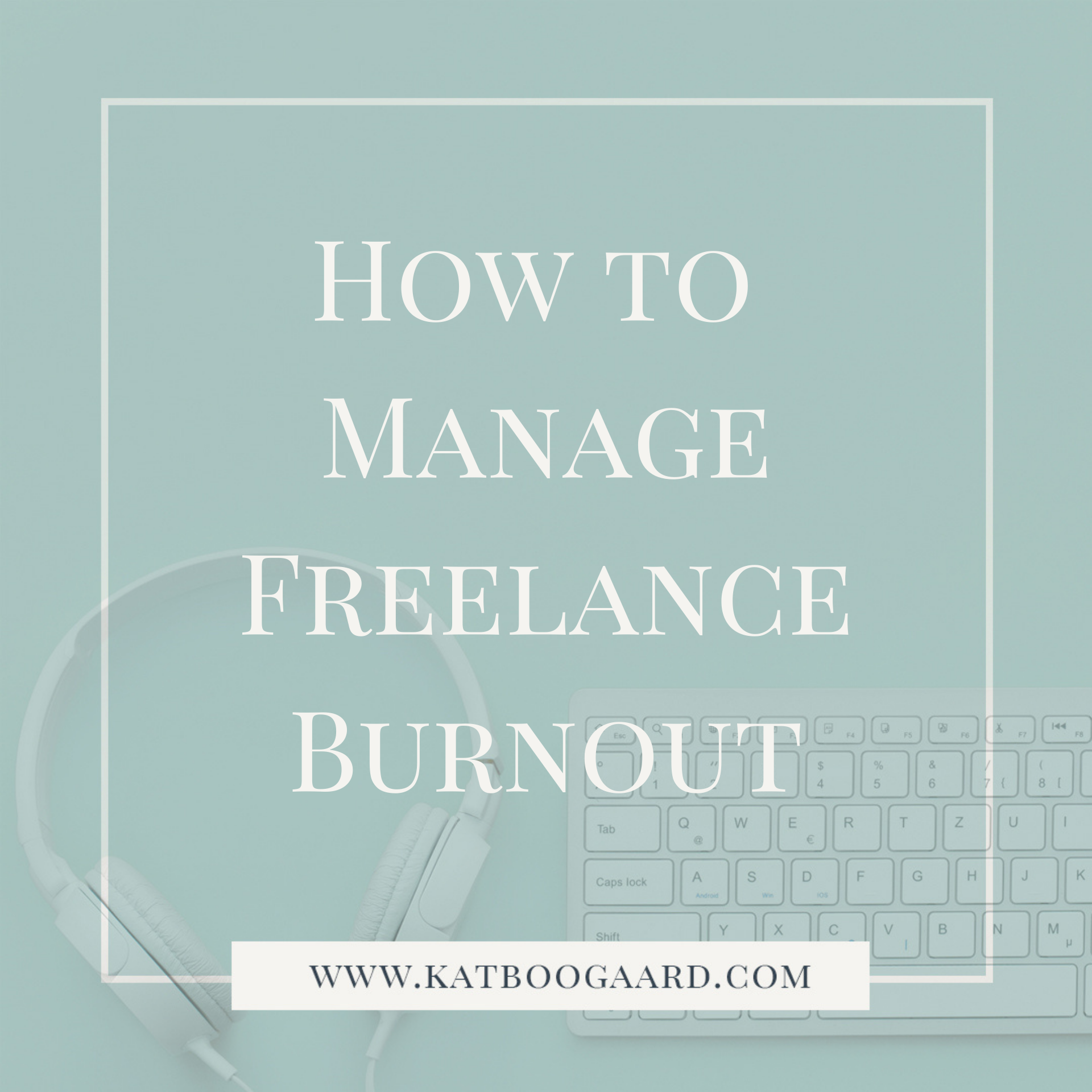Trying to figure out what’s next for your freelance career?
You’ve been at this freelancing thing for a while. Long enough that most of the advice for brand new freelancers doesn’t strike a chord with you.
You’ve mastered the basics. Instead, you want to figure out how to work more efficiently. Or iron out some dependable systems. Or raise your rates. Or get a better handle on your work-life balance. Or move away from the “take what you can get” mentality of your early freelance days to find more clients and projects that you’re actually excited about.
The list goes on and on. Freelancing is a constant exercise in self-improvement—and that’s exactly why this page exists. I’ve pulled together targeted products, blog posts, and even straight-up answers so that you can skip the 101-level advice and get the information you actually need.
I get that there’s a big difference between starting a business and growing one…
for established freelancers
Resources and Tips
Products to Level-Up Your Freelance Business
Freelance FAQs (and Super-Honest A’s)
I hear everybody talking about building a team—am I supposed to do that? How do I find more clients I actually like working with? When is it time to start charging more?
Even if you aren’t new at this whole freelancing thing, you’re bound to still have a lot of questions. It can be tough to find the straightforward answers you need (and let’s face it—some questions don’t even have straightforward answers).
I always try my best to tell it like it is. So, I’ve pulled together some of the questions I’m most commonly asked by more established freelancers, along with my most-helpful and honest answers.
How can I find more of my ideal clients?
I like to think of “ideal” clients as the overlapping part of a Venn diagram with three circles: work you enjoy doing, work you’re proud of, and work that pays well. The only thing better than finding one of those is finding more of them.
But how do you do that? There are a few things I’ve found helpful:
- Clarify your messaging: When I started being super explicit about what I do and who I do it for (e.g. “I write blog posts for software companies in the ‘world of work’ space” instead of “I write stuff!”), I was not only more appealing to my ideal clients but they also had an easier time finding me.
- Ask for referrals: You know those dreamy clients you love? They could be connected to even more dreamy clients. Ask them to recommend you if and when they hear of someone looking for your services. Many times, your clients know at least a few other brands and people in the same space.
- Expand your work with existing clients: You know the easiest way to find more ideal clients? Don’t find them at all. That’s right—rather than trying to fill your pipeline with more clients, why not expand the scope of your work with the ones you already know and love? Instead of writing a blog post per month for them, maybe you could write a blog post per week. Or, instead of only designing their social media graphics, maybe you could also design all of their slide decks. Go ahead and ask if they have more work to send your way. You might be surprised.
How do I know when it’s time to break up with a client?
Like most breakups, there’s a gut feeling that will tell you it’s time to go your separate ways. But, if you’re not one to rely on your intuition, here are a few other waving red flags that you might be better off moving on:
- You’re charging way more elsewhere (and the client doesn’t have the budget to increase your rate)
- You’re turning down other opportunities you’re excited about because you don’t have the capacity
- You’re shifting your offering or niche and this client is no longer a fit with your new direction
- You’re constantly having to reinforce your boundaries or expectations (and the client still doesn’t respect them)
- You’re filled with a sense of dread whenever you see an email from the client and you’re starting to resent the work
Recognize one (or even several) of those? It could be time to summon your courage and move to bigger and better things.
How can I reject a potential client (without burning bridges)?
Having to turn work away sounds like a dream to most beginner freelancers. But gosh, once you’re actually in that situation, it’s enough to send your stomach straight into your shoes.
Fortunately, I’ve refined a pretty simple process that helps me say “thanks but no thanks” to potential projects without feeling totally guilt-ridden. Here’s the step-by-step:
- Explicitly say “no”: You don’t want to bury the point of your message in a bunch of pleasantries and ambiguities. As awkward as it can feel, be straightforward with something like, “I appreciate you thinking of me but I can’t take on this project.”
- Give a brief explanation: While you don’t owe this prospective client any sort of justification, I’ve learned that failing to provide any sort of reasoning feels too blunt—and worse, it leaves room for them to try to talk you into it. I recommend giving a quick one-liner, whether it’s the fact that you’re too busy, you don’t offer that service, or whatever your reason.
- Recommend another freelancer: Provided this client doesn’t seem like a total nightmare (in which case I’ll simply turn them down and skip this step), recommend a fellow freelancer you think could be a fit. The client gets another option, that other freelancer gets a potential new project, and you get to feel good about sharing the wealth. As Michael Scott would say, it’s a “win-win-win.”
How often should I raise my rates? And by how much?
There isn’t one right answer here and pricing conversations always have a lot of nuance.
Some freelancers like to do a modest increase every six months or so while others do a slightly bigger increase once per year. Some people raise them on a predictable schedule while others do so when the time feels right.
It’s all about finding what works for you. There’s no golden rule that says you can only raise them at the beginning of the year—you have flexibility with your timing.
As far as the amount is concerned, that varies too. I hear the range of 10-20% referenced pretty frequently when it comes to reasonable rate increases. But again, there’s not one blanket answer that works for everybody. Don’t be afraid to do a little trial and error!
Oh, and if you’re several years into freelancing and still using the same rates you started with? You’re due to raise them, my friend. Go get your money.
What options are there to scale a freelance business?
Even if you don’t charge by the hour, making a living freelancing is still inherently tied to your time. As you grow your business, you’ll reach a point where you feel like you’ve hit a limit—beyond periodic rate increases, you’ve hit the ceiling on what you can do and earn.
Now what? It’s yet another area where there isn’t one answer (are you tired of me saying that yet?). There are a number of different routes for growing your freelance business:
- Make your processes more efficient: If you want to continue to fly solo, streamlining your existing processes is a great way to give yourself more wiggle room to grow—even if it isn’t the sexiest. By figuring out better systems that will automate or take the pain out of prospecting, client onboarding, or other admin tasks, you free up more time and brainpower for yourself.
- Bring on subcontractors: You don’t have to go it all alone. I started hiring work out to subcontractors about seven years into my freelance business and it was an effective way to work with more clients without running myself into the ground. If you don’t want to subcontract out your actual client work, you could also work with an assistant or someone to take over other aspects of your business.
- Create passive income: Fair warning: I’ve learned that passive income is anything but passive. But, if you find you’re being asked for similar things over and over again, consider packaging those into resources that people can purchase. Once they’re set up, they can bring in a bit of money without you needing to do much of anything with them.
Do you tell your clients that you work with subcontractors?
Most of the time, yes. However, I do so more as a professional courtesy rather than out of a sense of obligation.
I’m an independent contractor and all of my clients hire me as such. That means I have total control over when, where, and how the work gets accomplished—including hiring people. Based on my conversations with my small business attorney, I don’t need to disclose who I’m working with and in what capacity.
Of course, there’s some gray area there. If you’re freelance on-air talent, for example, clients will probably be pretty shocked (and disappointed) if they were expecting you on camera and suddenly it’s someone totally different.
But, in my case, I’m well within my right to work with whoever I want without needing any sort of approval or permission from clients. With that in mind, watch for this in client contracts. Some clients will try to limit or prohibit working with subcontractors and I never let that fly.
Even so, I usually do tell clients that I work with subcontractors as I think it keeps things simpler moving forward—especially if they see someone they don’t recognize hopping into the Google Doc or something.
How do I present it without seeming shady? I focus on the positives by framing it like “collaborating with subcontractors gives me more time and energy to deliver the high-quality content and client experience you expect.”
How can I achieve better work-life balance?
There’s a lot of hype about the “flexibility” of freelancing. And yes, it’s nice that I have autonomy over my own schedule. But real talk: Once you build up a solid freelance business, it commands a lot of your time. Work-life balance becomes a seemingly constant struggle.
I recommend setting firm boundaries for yourself. For example, I don’t take calls or meetings on Mondays and I don’t work at all on Fridays. Maybe you want to shut down by 3pm every workday or take one week off per month or quarter. Find your own parameters and then honor those like you would a client commitment.
I’ve also found it helpful to get a bird’s-eye view of what I’m working on at any given time so I can avoid overextending myself. My friend Marijana’s freelance project planner is great for getting that much-needed visibility into your overall workload.
Get even more freelance advice (and job leads) sent straight to your inbox.
Join the thousands of freelancers who are learning how to start or run better businesses. My monthly newsletter offers tips and advice, articles and resources, and a roundup of freelance job leads. Sign up and you’ll instantly receive my list of nine places to look for freelance clients right now.
You're in!
yes...





